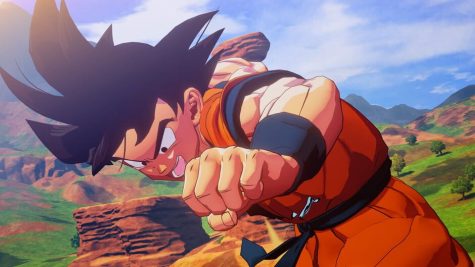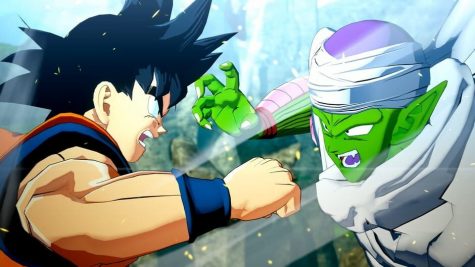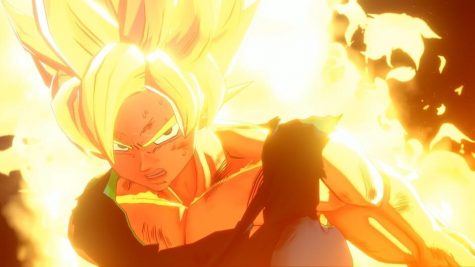Review: Relive ‘Dragon Ball Z’ with Kakarot
January 26, 2020

For as long as I can remember, the anime-adapted Dragon Ball Z series has always been packed with energy blasting battle sequences that last through multiple episodes. Fans of Dragon Ball Z know the series itself comes with hours of content and side characters that create a glowing universe.
“Dragon Ball Z: Kakarot,” developed by CyberConnect2, adapts the well-known anime series into a third-person, open-world, role-playing video game experience that has players control Goku and other Z-Fighters throughout the Dragon Ball Z story.
“Dragon Ball Z: Kakarot” is a perfect way for fans of the anime series to experience their favorite characters through a controller, but would not recommend it to anyone who is unfamiliar with the show because the two go hand-in-hand.
According to the website of publisher Bandai Namco Entertainment, the game lets players “fish, fly, eat, train, and battle your way through the Dagon Ball Z sagas, making friends and building relationships with a massive cast.”
But most of the time, it feels like a chase going after those main battles.
From the beginning of the series when Goku meets his lost brother Raditz, to Future Trunks completely demolishing King Cold and Frieza, Kakarot’s main story is filled to the brim with every supercharged fighting scene from the original anime series for an epic re-experience.
Kakarot allows the player to take control of familiar characters such as Goku, Gohan (kid, teen and adult), Piccolo, Vegeta, Future Trunks, Gotenks and Vegito. Each has their own skill tree to redeem skill points for upgrades and to level-up certain special attacks or attributes.

A lot of the game can be simplified by splitting it into two parts—time spent doing side stories and time spent playing the actual main story.
Side stories are generally made up of fetch-quest-styled missions that have the player either running from objective to objective, gathering items, hunting or fishing and cooking meals to secure player attributes. Players can also experience all these activities outside of missions, but the side stories themselves act as the filler by giving players time to train their character during periods of intermission and before taking on the next boss.
Attributes like a characters’ vitality, moves, and amount of ki—which acts as energy for special attacks during battle—are essential when progressing through the game because they allow the player to survive during tough battles and upgrade moves like Goku’s “Kamehameha” or Vegeta’s “Galick Gun.”
Most of the time, players can do the bare minimum with side stories and immediately chase after main story missions because the game shines the most.

The problem with the side stories is once the player is done with the first few, they have already experienced them all because their layouts are virtually the same. Minute characters telling you to get a list of items or hunt certain animals on repeat quickly gets old when it is combined with no recorded dialogue. Side stories do not stack up against the cutscenes and animations from the main story.
The main story includes adapted battles and scenes from the Saiyan Saga, Frieza Saga, Cell Saga and Buu Saga. Moments like Goku’s fight with Frieza on Planet Namek as it is about to be destroyed become intense and worthwhile because instead of wading through multiple episodes to see the fatal blows, the player is in control of the Saiyan warrior and the outcome of the fight.
Aside from having to do the occasional repetitive side mission, “Dragon Ball Z: Kakarot” delivers an experience like no other. Being able to explore Central City and Kame’s House allows for a new level of depth in an already massive world.
“Dragon Ball Z: Kakarot” is out now on Xbox One, PlayStation 4 and PC for $60. Two original episodes and one new story is expected to be released later as part of its $25 season pass.







